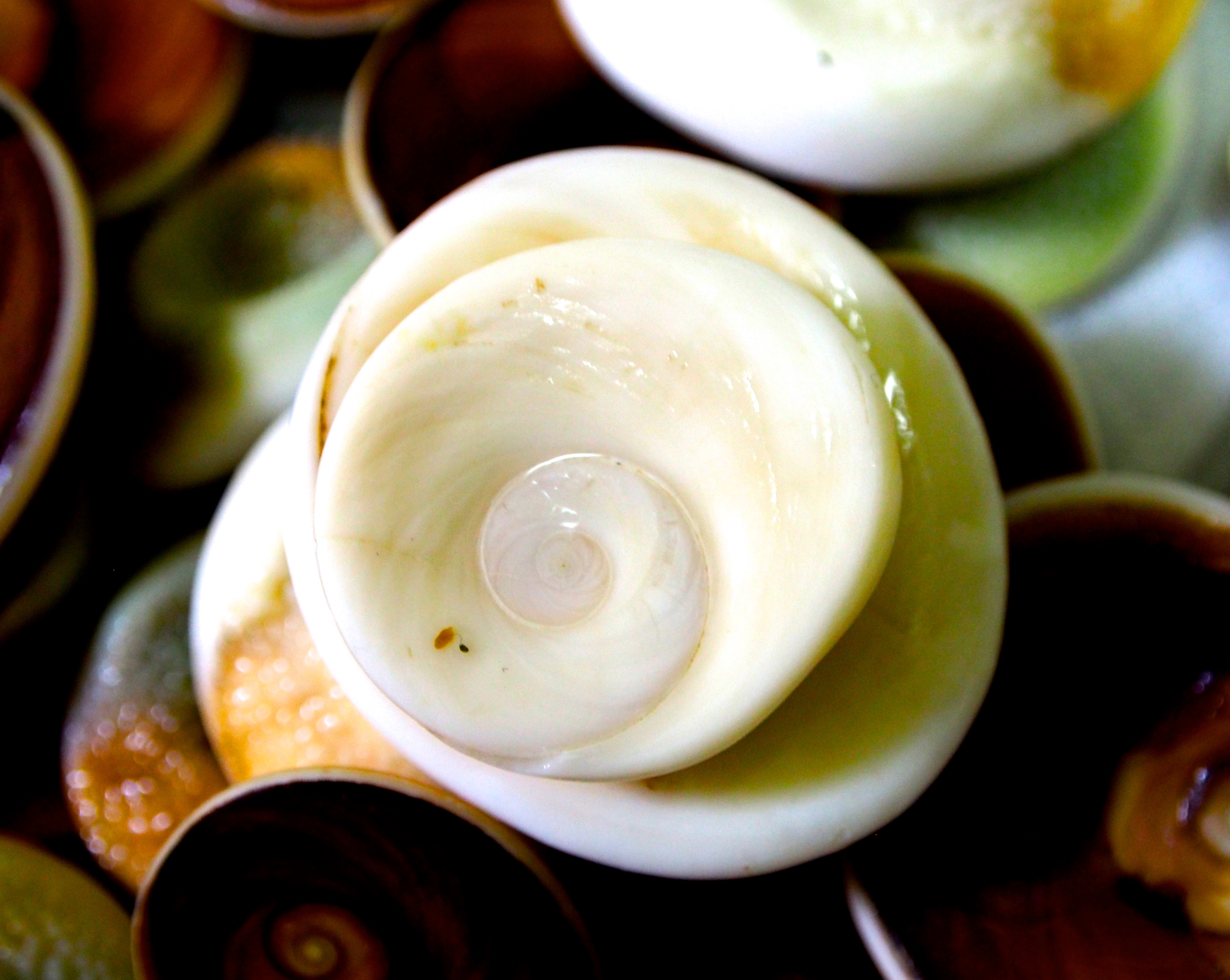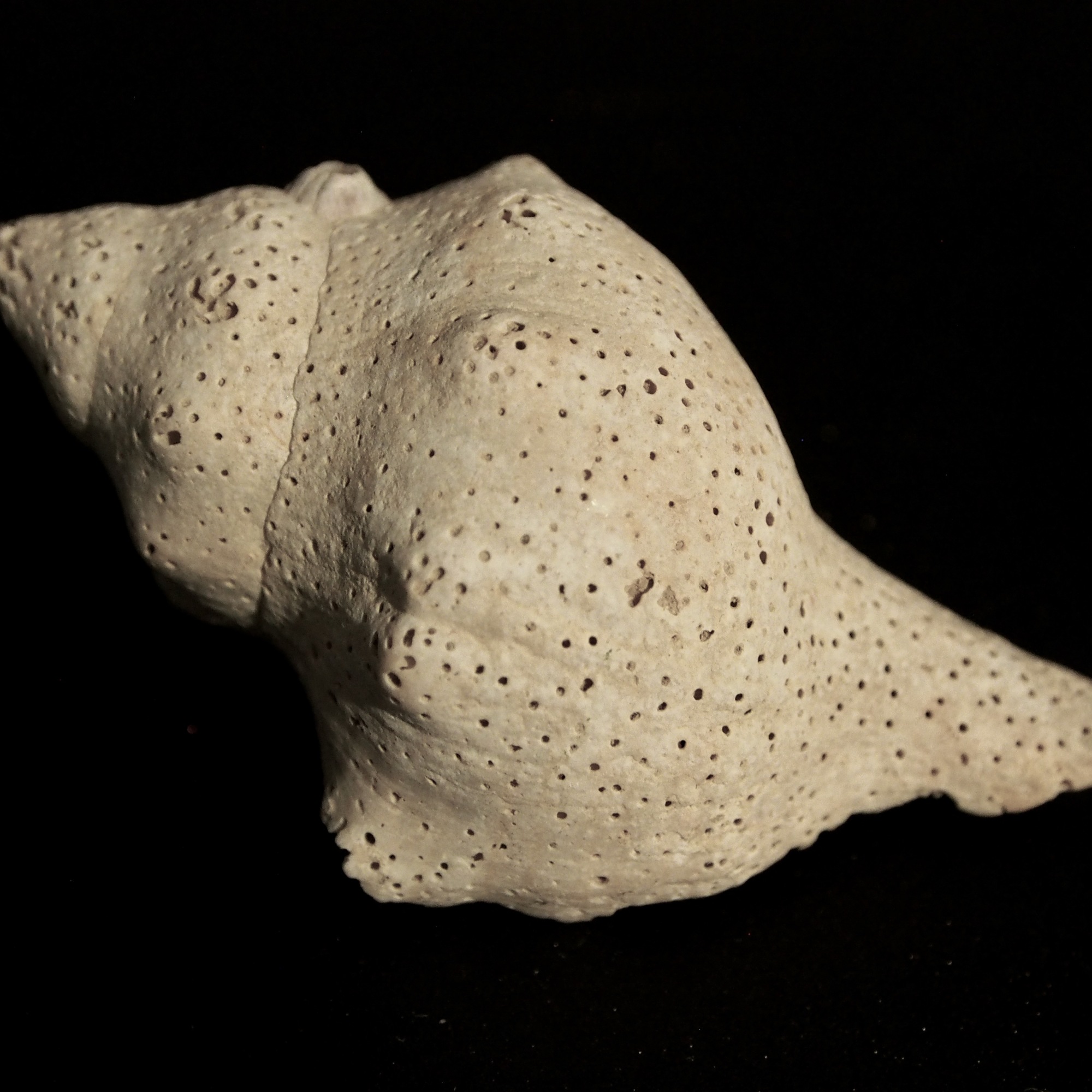I got into beach combing when I was in Japan. The sandy beaches and tidal flats of Jogashima provided endless opportunities for curious sightings and whimsical daydreams. I wondered what sort of homes the blue-white shards decorated in their former life as a porcelain vase. Turban snail (Turban cornutus) operculums, trap doors that protected them from predators, looked and felt like coins – perhaps they were once used as a form of currency in feudal Japan, as the cowry shell (Cypraea moneta) was elsewhere in the world.


The beach was also littered with a wide variety of bleached bivalve and snail shells. They had lost all the magnificent colours and patterns that would have made them interesting to look at. Seemingly ordinary, there was still something about them that managed to pique my interest. Some had numerous holes of various sizes across the entire surface, others had a single large hole at the hinge, while a lucky few managed to remain blemish-free and intact even in their afterlife.



Jogashima had become my favourite coastal getaway in Japan so my popular science readings naturally took a turn towards marine biology. I came across a few articles on marine sponges. They’re sessile creatures that attach themselves to a rock, shell, or seafloor, and remain there for the rest of their lives. In that respect, they’re a bit similar to barnacles during the very early stages of their lifecycles. However, their modus operandi is starkly different. Some marine sponges create interconnected tunnels throughout the structure of the shell by either mechanical drilling and/or acid etching at the localised site. I drew a connection with ant tunnels when I saw a graphical representation of the channels that marine sponges make in shells. While ants are good for soil because they aerate it and speed up the decomposition process for leaves and organic matter, marine sponges weaken the protective and mechanical function of shells to the detriment of the bivalves and snails. A notable example of this is the “red arse” (Cliona celata) sea sponge that has caused a substantial number of deaths in cultured pearl oysters (Pinctada maxima) across Western Australia.
I was only just scraping the surface of the world of shells and wasn’t as lucky with the shell that had a single hole at the hinge. Did someone drill a hole there so they could string a shell necklace, like what the Aboriginal Elders in Flinders Island, Tasmania did with iridescent rainbow kelp shells (Phasianotrochus irisodonte)? The curious case of the hole in the shell remained unsolved for a few more years.
Around October last year, Australia Post released a set of stamps that featured opalised fossils housed in various museums across Australia. They ranged from pine cones and tree stumps, to dinosaur teeth and mollusc shells. They all retained their original shape and structure but the chemical composition had completely changed to that of opals. I took a particular interest in the opalised moon snail (Naticidae spp.) shell due to some overlaps with my research.
Present-day opal fields in South Australia were joined to Antartica as the ancient supercontinent Gondwana around 125 to 100 million years ago. It was covered by the Eromanga Sea, a large, shallow body of water that was inhabited by many marine molluscs, fish, and swimming sea turtles. The shells of the marine molluscs turn into opal when silica in water gets trapped in the cavities and gradually hardens over time. Countless other non-opalised fossils and other shells have also been discovered.
These fossil records provide a means for palaeontologists to determine ancient ecosystems and predatory-prey dynamics. Moon snails, from ancient to modern, have long been considered to predominantly feed on bivalves. They first engulf the bivalve shell and then secrete acid in a localised area and mechanically puncture weakened spot. Finally, they extend their proboscis through the opening and consume the flesh of the prey, alive.
Tada! The curious case of the hole in the shell, solved.
There have also been sightings of the Australian moon snail (Conuber sordidus) creeping up on soldier crabs (Mictyris longicarpus) and feeding on them in much the same way. Ah, the intertidal zone, so pretty to look at, yet so ruthless for its inhabitants!
